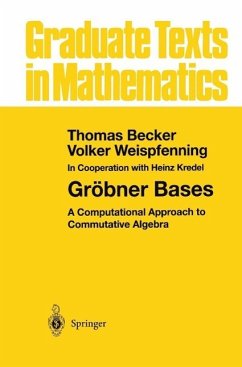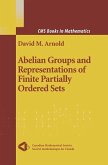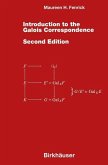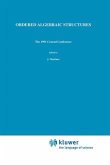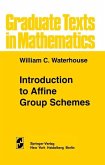Thomas Becker, Volker Weispfenning
Gröbner Bases (eBook, PDF)
A Computational Approach to Commutative Algebra
64,95 €
64,95 €
inkl. MwSt.
Sofort per Download lieferbar

32 °P sammeln
64,95 €
Als Download kaufen

64,95 €
inkl. MwSt.
Sofort per Download lieferbar

32 °P sammeln
Jetzt verschenken
Alle Infos zum eBook verschenken
64,95 €
inkl. MwSt.
Sofort per Download lieferbar
Alle Infos zum eBook verschenken

32 °P sammeln
Thomas Becker, Volker Weispfenning
Gröbner Bases (eBook, PDF)
A Computational Approach to Commutative Algebra
- Format: PDF
- Merkliste
- Auf die Merkliste
- Bewerten Bewerten
- Teilen
- Produkt teilen
- Produkterinnerung
- Produkterinnerung

Bitte loggen Sie sich zunächst in Ihr Kundenkonto ein oder registrieren Sie sich bei
bücher.de, um das eBook-Abo tolino select nutzen zu können.
Hier können Sie sich einloggen
Hier können Sie sich einloggen
Sie sind bereits eingeloggt. Klicken Sie auf 2. tolino select Abo, um fortzufahren.

Bitte loggen Sie sich zunächst in Ihr Kundenkonto ein oder registrieren Sie sich bei bücher.de, um das eBook-Abo tolino select nutzen zu können.
This book provides a comprehensive treatment of Gr bner bases theory embedded in an introduction to commutative algebra from a computational point of view. The book explains how the Buchberger algorithm and the theory surrounding it are eminently important both for the mathematical theory and for computational applications. A number of results such as optimized version of the Buchberger algorithm are presented in textbook format for the first time.
- Geräte: PC
- ohne Kopierschutz
- eBook Hilfe
- Größe: 53.2MB
Andere Kunden interessierten sich auch für
![Abelian Groups and Representations of Finite Partially Ordered Sets (eBook, PDF) Abelian Groups and Representations of Finite Partially Ordered Sets (eBook, PDF)]() David ArnoldAbelian Groups and Representations of Finite Partially Ordered Sets (eBook, PDF)40,95 €
David ArnoldAbelian Groups and Representations of Finite Partially Ordered Sets (eBook, PDF)40,95 €![Noncommutative Gröbner Bases and Filtered-Graded Transfer (eBook, PDF) Noncommutative Gröbner Bases and Filtered-Graded Transfer (eBook, PDF)]() Huishi LiNoncommutative Gröbner Bases and Filtered-Graded Transfer (eBook, PDF)34,95 €
Huishi LiNoncommutative Gröbner Bases and Filtered-Graded Transfer (eBook, PDF)34,95 €![Introduction to the Galois Correspondence (eBook, PDF) Introduction to the Galois Correspondence (eBook, PDF)]() Maureen H. FenrickIntroduction to the Galois Correspondence (eBook, PDF)40,95 €
Maureen H. FenrickIntroduction to the Galois Correspondence (eBook, PDF)40,95 €![Ordered Algebraic Structures (eBook, PDF) Ordered Algebraic Structures (eBook, PDF)]() Ordered Algebraic Structures (eBook, PDF)112,95 €
Ordered Algebraic Structures (eBook, PDF)112,95 €![Introduction to Affine Group Schemes (eBook, PDF) Introduction to Affine Group Schemes (eBook, PDF)]() W. C. WaterhouseIntroduction to Affine Group Schemes (eBook, PDF)68,95 €
W. C. WaterhouseIntroduction to Affine Group Schemes (eBook, PDF)68,95 €![Bieberbach Groups and Flat Manifolds (eBook, PDF) Bieberbach Groups and Flat Manifolds (eBook, PDF)]() Leonard S. CharlapBieberbach Groups and Flat Manifolds (eBook, PDF)40,95 €
Leonard S. CharlapBieberbach Groups and Flat Manifolds (eBook, PDF)40,95 €![Abstract Algebra (eBook, PDF) Abstract Algebra (eBook, PDF)]() Pierre Antoine GrilletAbstract Algebra (eBook, PDF)43,95 €
Pierre Antoine GrilletAbstract Algebra (eBook, PDF)43,95 €-
-
-
This book provides a comprehensive treatment of Gr bner bases theory embedded in an introduction to commutative algebra from a computational point of view. The book explains how the Buchberger algorithm and the theory surrounding it are eminently important both for the mathematical theory and for computational applications. A number of results such as optimized version of the Buchberger algorithm are presented in textbook format for the first time.
Dieser Download kann aus rechtlichen Gründen nur mit Rechnungsadresse in A, B, BG, CY, CZ, D, DK, EW, E, FIN, F, GR, HR, H, IRL, I, LT, L, LR, M, NL, PL, P, R, S, SLO, SK ausgeliefert werden.
Produktdetails
- Produktdetails
- Verlag: Springer US
- Seitenzahl: 576
- Erscheinungstermin: 6. Dezember 2012
- Englisch
- ISBN-13: 9781461209133
- Artikelnr.: 44052293
- Verlag: Springer US
- Seitenzahl: 576
- Erscheinungstermin: 6. Dezember 2012
- Englisch
- ISBN-13: 9781461209133
- Artikelnr.: 44052293
- Herstellerkennzeichnung Die Herstellerinformationen sind derzeit nicht verfügbar.
0 Basics.
0.1 Natural Numbers and Integers.
0.2 Maps.
0.3 Mathematical Algorithms.
Notes.
1 Commutative Rings with Unity.
1.1 Why Abstract Algebra?.
1.2 Groups.
1.3 Rings.
1.4 Subrings and Homomorphisms.
1.5 Ideals and Residue Class Rings.
1.6 The Homomorphism Theorem.
1.7 Gcd's, Lcm's, and Principal Ideal Domains.
1.8 Maximal and Prime Ideals.
1.9 Prime Rings and Characteristic.
1.10 Adjunction, Products, and Quotient Rings.
Notes.
2 Polynomial Rings.
2.1 Definitions.
2.2 Euclidean Domains.
2.3 Unique Factorization Domains.
2.4 The Gaussian Lemma.
2.5 Polynomial Gcd's.
2.6 Squarefree Decomposition of Polynomials.
2.7 Factorization of Polynomials.
2.8 The Chinese Remainder Theorem.
Notes.
3 Vector Spaces and Modules.
3.1 Vector Spaces.
3.2 Independent Sets and Dimension.
3.3 Modules.
Notes.
4 Orders and Abstract Reduction Relations.
4.1 The Axiom of Choice and Some Consequences in Algebra.
4.2 Relations.
4.3 Foundedness Properties.
4.4 Some Special Orders.
4.5 Reduction Relations.
4.6 Computing in Algebraic Structures.
Notes.
5 Gröbner Bases.
5.1 Term Orders and Polynomial Reductions.
5.2 Gröbner Bases
Existence and Uniqueness.
5.3 Gröbner Bases
Construction.
5.4 Standard Representations.
5.5 Improved Gröbner Basis Algorithms.
5.6 The Extended Gröbner Basis Algorithm.
Notes.
6 First Applications of Gröbner Bases.
6.1 Computation of Syzygies.
6.2 Basic Algorithms in Ideal Theory.
6.3 Dimension of Ideals.
6.4 Uniform Word Problems.
Notes.
7 Field Extensions and the Hilbert Nullstellensatz.
7.1 Field Extensions.
7.2 The Algebraic Closure of a Field.
7.3 Separable Polynomials and Perfect Fields.
7.4 The Hilbert Nullstellensatz.
7.5 Height and Depth of Prime Ideals.
7.6 Implicitization of RationalParametrizations.
7.7 Invertibility of Polynomial Maps.
Notes.
8 Decomposition, Radical, and Zeroes of Ideals.
8.1 Preliminaries.
8.2 The Radical of a Zero
Dimensional Ideal.
8.3 The Number of Zeroes of an Ideal.
8.4 Primary Ideals.
8.5 Primary Decomposition in Noetherian Rings.
8.6 Primary Decomposition of Zero
Dimensional Ideals.
8.7 Radical and Decomposition in Higher Dimensions.
8.8 Computing Real Zeroes of Polynomial Systems.
Notes.
9 Linear Algebra in Residue Class Rings.
9.1 Gröbner Bases and Reduced Terms.
9.2 Computing in Finitely Generated Algebras.
9.3 Dimensions and the Hilbert Function.
Notes.
10 Variations on Gröbner Bases.
10.1 Gröbner Bases over PID's and Euclidean Domains.
10.2 Homogeneous Gröbner Bases.
10.3 Homogenization.
10.4 Gröbner Bases for Polynomial Modules.
10.5 Systems of Linear Equations.
10.6 Standard Bases and the Tangent Cone.
10.7 Symmetric Functions.
Notes.
Appendix: Outlook on Advanced and Related Topics.
Complexity of Gröbner Basis Constructions.
Term Orders and Universal Gröbner Bases.
Comprehensive Gröbner Bases.
Gröbner Bases and Automatic Theorem Proving.
Characteristic Sets and Wu
Ritt Reduction.
Term Rewriting.
Standard Bases in Power Series Rings.
Non
Commutative Gröbner Bases.
Gröbner Bases and Differential Algebra.
Selected Bibliography.
Conference Proceedings.
Books and Monographs.
Articles.
List of Symbols.
0.1 Natural Numbers and Integers.
0.2 Maps.
0.3 Mathematical Algorithms.
Notes.
1 Commutative Rings with Unity.
1.1 Why Abstract Algebra?.
1.2 Groups.
1.3 Rings.
1.4 Subrings and Homomorphisms.
1.5 Ideals and Residue Class Rings.
1.6 The Homomorphism Theorem.
1.7 Gcd's, Lcm's, and Principal Ideal Domains.
1.8 Maximal and Prime Ideals.
1.9 Prime Rings and Characteristic.
1.10 Adjunction, Products, and Quotient Rings.
Notes.
2 Polynomial Rings.
2.1 Definitions.
2.2 Euclidean Domains.
2.3 Unique Factorization Domains.
2.4 The Gaussian Lemma.
2.5 Polynomial Gcd's.
2.6 Squarefree Decomposition of Polynomials.
2.7 Factorization of Polynomials.
2.8 The Chinese Remainder Theorem.
Notes.
3 Vector Spaces and Modules.
3.1 Vector Spaces.
3.2 Independent Sets and Dimension.
3.3 Modules.
Notes.
4 Orders and Abstract Reduction Relations.
4.1 The Axiom of Choice and Some Consequences in Algebra.
4.2 Relations.
4.3 Foundedness Properties.
4.4 Some Special Orders.
4.5 Reduction Relations.
4.6 Computing in Algebraic Structures.
Notes.
5 Gröbner Bases.
5.1 Term Orders and Polynomial Reductions.
5.2 Gröbner Bases
Existence and Uniqueness.
5.3 Gröbner Bases
Construction.
5.4 Standard Representations.
5.5 Improved Gröbner Basis Algorithms.
5.6 The Extended Gröbner Basis Algorithm.
Notes.
6 First Applications of Gröbner Bases.
6.1 Computation of Syzygies.
6.2 Basic Algorithms in Ideal Theory.
6.3 Dimension of Ideals.
6.4 Uniform Word Problems.
Notes.
7 Field Extensions and the Hilbert Nullstellensatz.
7.1 Field Extensions.
7.2 The Algebraic Closure of a Field.
7.3 Separable Polynomials and Perfect Fields.
7.4 The Hilbert Nullstellensatz.
7.5 Height and Depth of Prime Ideals.
7.6 Implicitization of RationalParametrizations.
7.7 Invertibility of Polynomial Maps.
Notes.
8 Decomposition, Radical, and Zeroes of Ideals.
8.1 Preliminaries.
8.2 The Radical of a Zero
Dimensional Ideal.
8.3 The Number of Zeroes of an Ideal.
8.4 Primary Ideals.
8.5 Primary Decomposition in Noetherian Rings.
8.6 Primary Decomposition of Zero
Dimensional Ideals.
8.7 Radical and Decomposition in Higher Dimensions.
8.8 Computing Real Zeroes of Polynomial Systems.
Notes.
9 Linear Algebra in Residue Class Rings.
9.1 Gröbner Bases and Reduced Terms.
9.2 Computing in Finitely Generated Algebras.
9.3 Dimensions and the Hilbert Function.
Notes.
10 Variations on Gröbner Bases.
10.1 Gröbner Bases over PID's and Euclidean Domains.
10.2 Homogeneous Gröbner Bases.
10.3 Homogenization.
10.4 Gröbner Bases for Polynomial Modules.
10.5 Systems of Linear Equations.
10.6 Standard Bases and the Tangent Cone.
10.7 Symmetric Functions.
Notes.
Appendix: Outlook on Advanced and Related Topics.
Complexity of Gröbner Basis Constructions.
Term Orders and Universal Gröbner Bases.
Comprehensive Gröbner Bases.
Gröbner Bases and Automatic Theorem Proving.
Characteristic Sets and Wu
Ritt Reduction.
Term Rewriting.
Standard Bases in Power Series Rings.
Non
Commutative Gröbner Bases.
Gröbner Bases and Differential Algebra.
Selected Bibliography.
Conference Proceedings.
Books and Monographs.
Articles.
List of Symbols.
0 Basics.- 0.1 Natural Numbers and Integers.- 0.2 Maps.- 0.3 Mathematical Algorithms.- Notes.- 1 Commutative Rings with Unity.- 1.1 Why Abstract Algebra?.- 1.2 Groups.- 1.3 Rings.- 1.4 Subrings and Homomorphisms.- 1.5 Ideals and Residue Class Rings.- 1.6 The Homomorphism Theorem.- 1.7 Gcd's, Lcm's, and Principal Ideal Domains.- 1.8 Maximal and Prime Ideals.- 1.9 Prime Rings and Characteristic.- 1.10 Adjunction, Products, and Quotient Rings.- Notes.- 2 Polynomial Rings.- 2.1 Definitions.- 2.2 Euclidean Domains.- 2.3 Unique Factorization Domains.- 2.4 The Gaussian Lemma.- 2.5 Polynomial Gcd's.- 2.6 Squarefree Decomposition of Polynomials.- 2.7 Factorization of Polynomials.- 2.8 The Chinese Remainder Theorem.- Notes.- 3 Vector Spaces and Modules.- 3.1 Vector Spaces.- 3.2 Independent Sets and Dimension.- 3.3 Modules.- Notes.- 4 Orders and Abstract Reduction Relations.- 4.1 The Axiom of Choice and Some Consequences in Algebra.- 4.2 Relations.- 4.3 Foundedness Properties.- 4.4 Some Special Orders.- 4.5 Reduction Relations.- 4.6 Computing in Algebraic Structures.- Notes.- 5 Gröbner Bases.- 5.1 Term Orders and Polynomial Reductions.- 5.2 Gröbner Bases-Existence and Uniqueness.- 5.3 Gröbner Bases-Construction.- 5.4 Standard Representations.- 5.5 Improved Gröbner Basis Algorithms.- 5.6 The Extended Gröbner Basis Algorithm.- Notes.- 6 First Applications of Gröbner Bases.- 6.1 Computation of Syzygies.- 6.2 Basic Algorithms in Ideal Theory.- 6.3 Dimension of Ideals.- 6.4 Uniform Word Problems.- Notes.- 7 Field Extensions and the Hilbert Nullstellensatz.- 7.1 Field Extensions.- 7.2 The Algebraic Closure of a Field.- 7.3 Separable Polynomials and Perfect Fields.- 7.4 The Hilbert Nullstellensatz.- 7.5 Height and Depth of Prime Ideals.- 7.6 Implicitization of RationalParametrizations.- 7.7 Invertibility of Polynomial Maps.- Notes.- 8 Decomposition, Radical, and Zeroes of Ideals.- 8.1 Preliminaries.- 8.2 The Radical of a Zero-Dimensional Ideal.- 8.3 The Number of Zeroes of an Ideal.- 8.4 Primary Ideals.- 8.5 Primary Decomposition in Noetherian Rings.- 8.6 Primary Decomposition of Zero-Dimensional Ideals.- 8.7 Radical and Decomposition in Higher Dimensions.- 8.8 Computing Real Zeroes of Polynomial Systems.- Notes.- 9 Linear Algebra in Residue Class Rings.- 9.1 Gröbner Bases and Reduced Terms.- 9.2 Computing in Finitely Generated Algebras.- 9.3 Dimensions and the Hilbert Function.- Notes.- 10 Variations on Gröbner Bases.- 10.1 Gröbner Bases over PID's and Euclidean Domains.- 10.2 Homogeneous Gröbner Bases.- 10.3 Homogenization.- 10.4 Gröbner Bases for Polynomial Modules.- 10.5 Systems of Linear Equations.- 10.6 Standard Bases and the Tangent Cone.- 10.7 Symmetric Functions.- Notes.- Appendix: Outlook on Advanced and Related Topics.- Complexity of Gröbner Basis Constructions.- Term Orders and Universal Gröbner Bases.- Comprehensive Gröbner Bases.- Gröbner Bases and Automatic Theorem Proving.- Characteristic Sets and Wu-Ritt Reduction.- Term Rewriting.- Standard Bases in Power Series Rings.- Non-Commutative Gröbner Bases.- Gröbner Bases and Differential Algebra.- Selected Bibliography.- Conference Proceedings.- Books and Monographs.- Articles.- List of Symbols.
0 Basics.
0.1 Natural Numbers and Integers.
0.2 Maps.
0.3 Mathematical Algorithms.
Notes.
1 Commutative Rings with Unity.
1.1 Why Abstract Algebra?.
1.2 Groups.
1.3 Rings.
1.4 Subrings and Homomorphisms.
1.5 Ideals and Residue Class Rings.
1.6 The Homomorphism Theorem.
1.7 Gcd's, Lcm's, and Principal Ideal Domains.
1.8 Maximal and Prime Ideals.
1.9 Prime Rings and Characteristic.
1.10 Adjunction, Products, and Quotient Rings.
Notes.
2 Polynomial Rings.
2.1 Definitions.
2.2 Euclidean Domains.
2.3 Unique Factorization Domains.
2.4 The Gaussian Lemma.
2.5 Polynomial Gcd's.
2.6 Squarefree Decomposition of Polynomials.
2.7 Factorization of Polynomials.
2.8 The Chinese Remainder Theorem.
Notes.
3 Vector Spaces and Modules.
3.1 Vector Spaces.
3.2 Independent Sets and Dimension.
3.3 Modules.
Notes.
4 Orders and Abstract Reduction Relations.
4.1 The Axiom of Choice and Some Consequences in Algebra.
4.2 Relations.
4.3 Foundedness Properties.
4.4 Some Special Orders.
4.5 Reduction Relations.
4.6 Computing in Algebraic Structures.
Notes.
5 Gröbner Bases.
5.1 Term Orders and Polynomial Reductions.
5.2 Gröbner Bases
Existence and Uniqueness.
5.3 Gröbner Bases
Construction.
5.4 Standard Representations.
5.5 Improved Gröbner Basis Algorithms.
5.6 The Extended Gröbner Basis Algorithm.
Notes.
6 First Applications of Gröbner Bases.
6.1 Computation of Syzygies.
6.2 Basic Algorithms in Ideal Theory.
6.3 Dimension of Ideals.
6.4 Uniform Word Problems.
Notes.
7 Field Extensions and the Hilbert Nullstellensatz.
7.1 Field Extensions.
7.2 The Algebraic Closure of a Field.
7.3 Separable Polynomials and Perfect Fields.
7.4 The Hilbert Nullstellensatz.
7.5 Height and Depth of Prime Ideals.
7.6 Implicitization of RationalParametrizations.
7.7 Invertibility of Polynomial Maps.
Notes.
8 Decomposition, Radical, and Zeroes of Ideals.
8.1 Preliminaries.
8.2 The Radical of a Zero
Dimensional Ideal.
8.3 The Number of Zeroes of an Ideal.
8.4 Primary Ideals.
8.5 Primary Decomposition in Noetherian Rings.
8.6 Primary Decomposition of Zero
Dimensional Ideals.
8.7 Radical and Decomposition in Higher Dimensions.
8.8 Computing Real Zeroes of Polynomial Systems.
Notes.
9 Linear Algebra in Residue Class Rings.
9.1 Gröbner Bases and Reduced Terms.
9.2 Computing in Finitely Generated Algebras.
9.3 Dimensions and the Hilbert Function.
Notes.
10 Variations on Gröbner Bases.
10.1 Gröbner Bases over PID's and Euclidean Domains.
10.2 Homogeneous Gröbner Bases.
10.3 Homogenization.
10.4 Gröbner Bases for Polynomial Modules.
10.5 Systems of Linear Equations.
10.6 Standard Bases and the Tangent Cone.
10.7 Symmetric Functions.
Notes.
Appendix: Outlook on Advanced and Related Topics.
Complexity of Gröbner Basis Constructions.
Term Orders and Universal Gröbner Bases.
Comprehensive Gröbner Bases.
Gröbner Bases and Automatic Theorem Proving.
Characteristic Sets and Wu
Ritt Reduction.
Term Rewriting.
Standard Bases in Power Series Rings.
Non
Commutative Gröbner Bases.
Gröbner Bases and Differential Algebra.
Selected Bibliography.
Conference Proceedings.
Books and Monographs.
Articles.
List of Symbols.
0.1 Natural Numbers and Integers.
0.2 Maps.
0.3 Mathematical Algorithms.
Notes.
1 Commutative Rings with Unity.
1.1 Why Abstract Algebra?.
1.2 Groups.
1.3 Rings.
1.4 Subrings and Homomorphisms.
1.5 Ideals and Residue Class Rings.
1.6 The Homomorphism Theorem.
1.7 Gcd's, Lcm's, and Principal Ideal Domains.
1.8 Maximal and Prime Ideals.
1.9 Prime Rings and Characteristic.
1.10 Adjunction, Products, and Quotient Rings.
Notes.
2 Polynomial Rings.
2.1 Definitions.
2.2 Euclidean Domains.
2.3 Unique Factorization Domains.
2.4 The Gaussian Lemma.
2.5 Polynomial Gcd's.
2.6 Squarefree Decomposition of Polynomials.
2.7 Factorization of Polynomials.
2.8 The Chinese Remainder Theorem.
Notes.
3 Vector Spaces and Modules.
3.1 Vector Spaces.
3.2 Independent Sets and Dimension.
3.3 Modules.
Notes.
4 Orders and Abstract Reduction Relations.
4.1 The Axiom of Choice and Some Consequences in Algebra.
4.2 Relations.
4.3 Foundedness Properties.
4.4 Some Special Orders.
4.5 Reduction Relations.
4.6 Computing in Algebraic Structures.
Notes.
5 Gröbner Bases.
5.1 Term Orders and Polynomial Reductions.
5.2 Gröbner Bases
Existence and Uniqueness.
5.3 Gröbner Bases
Construction.
5.4 Standard Representations.
5.5 Improved Gröbner Basis Algorithms.
5.6 The Extended Gröbner Basis Algorithm.
Notes.
6 First Applications of Gröbner Bases.
6.1 Computation of Syzygies.
6.2 Basic Algorithms in Ideal Theory.
6.3 Dimension of Ideals.
6.4 Uniform Word Problems.
Notes.
7 Field Extensions and the Hilbert Nullstellensatz.
7.1 Field Extensions.
7.2 The Algebraic Closure of a Field.
7.3 Separable Polynomials and Perfect Fields.
7.4 The Hilbert Nullstellensatz.
7.5 Height and Depth of Prime Ideals.
7.6 Implicitization of RationalParametrizations.
7.7 Invertibility of Polynomial Maps.
Notes.
8 Decomposition, Radical, and Zeroes of Ideals.
8.1 Preliminaries.
8.2 The Radical of a Zero
Dimensional Ideal.
8.3 The Number of Zeroes of an Ideal.
8.4 Primary Ideals.
8.5 Primary Decomposition in Noetherian Rings.
8.6 Primary Decomposition of Zero
Dimensional Ideals.
8.7 Radical and Decomposition in Higher Dimensions.
8.8 Computing Real Zeroes of Polynomial Systems.
Notes.
9 Linear Algebra in Residue Class Rings.
9.1 Gröbner Bases and Reduced Terms.
9.2 Computing in Finitely Generated Algebras.
9.3 Dimensions and the Hilbert Function.
Notes.
10 Variations on Gröbner Bases.
10.1 Gröbner Bases over PID's and Euclidean Domains.
10.2 Homogeneous Gröbner Bases.
10.3 Homogenization.
10.4 Gröbner Bases for Polynomial Modules.
10.5 Systems of Linear Equations.
10.6 Standard Bases and the Tangent Cone.
10.7 Symmetric Functions.
Notes.
Appendix: Outlook on Advanced and Related Topics.
Complexity of Gröbner Basis Constructions.
Term Orders and Universal Gröbner Bases.
Comprehensive Gröbner Bases.
Gröbner Bases and Automatic Theorem Proving.
Characteristic Sets and Wu
Ritt Reduction.
Term Rewriting.
Standard Bases in Power Series Rings.
Non
Commutative Gröbner Bases.
Gröbner Bases and Differential Algebra.
Selected Bibliography.
Conference Proceedings.
Books and Monographs.
Articles.
List of Symbols.
0 Basics.- 0.1 Natural Numbers and Integers.- 0.2 Maps.- 0.3 Mathematical Algorithms.- Notes.- 1 Commutative Rings with Unity.- 1.1 Why Abstract Algebra?.- 1.2 Groups.- 1.3 Rings.- 1.4 Subrings and Homomorphisms.- 1.5 Ideals and Residue Class Rings.- 1.6 The Homomorphism Theorem.- 1.7 Gcd's, Lcm's, and Principal Ideal Domains.- 1.8 Maximal and Prime Ideals.- 1.9 Prime Rings and Characteristic.- 1.10 Adjunction, Products, and Quotient Rings.- Notes.- 2 Polynomial Rings.- 2.1 Definitions.- 2.2 Euclidean Domains.- 2.3 Unique Factorization Domains.- 2.4 The Gaussian Lemma.- 2.5 Polynomial Gcd's.- 2.6 Squarefree Decomposition of Polynomials.- 2.7 Factorization of Polynomials.- 2.8 The Chinese Remainder Theorem.- Notes.- 3 Vector Spaces and Modules.- 3.1 Vector Spaces.- 3.2 Independent Sets and Dimension.- 3.3 Modules.- Notes.- 4 Orders and Abstract Reduction Relations.- 4.1 The Axiom of Choice and Some Consequences in Algebra.- 4.2 Relations.- 4.3 Foundedness Properties.- 4.4 Some Special Orders.- 4.5 Reduction Relations.- 4.6 Computing in Algebraic Structures.- Notes.- 5 Gröbner Bases.- 5.1 Term Orders and Polynomial Reductions.- 5.2 Gröbner Bases-Existence and Uniqueness.- 5.3 Gröbner Bases-Construction.- 5.4 Standard Representations.- 5.5 Improved Gröbner Basis Algorithms.- 5.6 The Extended Gröbner Basis Algorithm.- Notes.- 6 First Applications of Gröbner Bases.- 6.1 Computation of Syzygies.- 6.2 Basic Algorithms in Ideal Theory.- 6.3 Dimension of Ideals.- 6.4 Uniform Word Problems.- Notes.- 7 Field Extensions and the Hilbert Nullstellensatz.- 7.1 Field Extensions.- 7.2 The Algebraic Closure of a Field.- 7.3 Separable Polynomials and Perfect Fields.- 7.4 The Hilbert Nullstellensatz.- 7.5 Height and Depth of Prime Ideals.- 7.6 Implicitization of RationalParametrizations.- 7.7 Invertibility of Polynomial Maps.- Notes.- 8 Decomposition, Radical, and Zeroes of Ideals.- 8.1 Preliminaries.- 8.2 The Radical of a Zero-Dimensional Ideal.- 8.3 The Number of Zeroes of an Ideal.- 8.4 Primary Ideals.- 8.5 Primary Decomposition in Noetherian Rings.- 8.6 Primary Decomposition of Zero-Dimensional Ideals.- 8.7 Radical and Decomposition in Higher Dimensions.- 8.8 Computing Real Zeroes of Polynomial Systems.- Notes.- 9 Linear Algebra in Residue Class Rings.- 9.1 Gröbner Bases and Reduced Terms.- 9.2 Computing in Finitely Generated Algebras.- 9.3 Dimensions and the Hilbert Function.- Notes.- 10 Variations on Gröbner Bases.- 10.1 Gröbner Bases over PID's and Euclidean Domains.- 10.2 Homogeneous Gröbner Bases.- 10.3 Homogenization.- 10.4 Gröbner Bases for Polynomial Modules.- 10.5 Systems of Linear Equations.- 10.6 Standard Bases and the Tangent Cone.- 10.7 Symmetric Functions.- Notes.- Appendix: Outlook on Advanced and Related Topics.- Complexity of Gröbner Basis Constructions.- Term Orders and Universal Gröbner Bases.- Comprehensive Gröbner Bases.- Gröbner Bases and Automatic Theorem Proving.- Characteristic Sets and Wu-Ritt Reduction.- Term Rewriting.- Standard Bases in Power Series Rings.- Non-Commutative Gröbner Bases.- Gröbner Bases and Differential Algebra.- Selected Bibliography.- Conference Proceedings.- Books and Monographs.- Articles.- List of Symbols.
